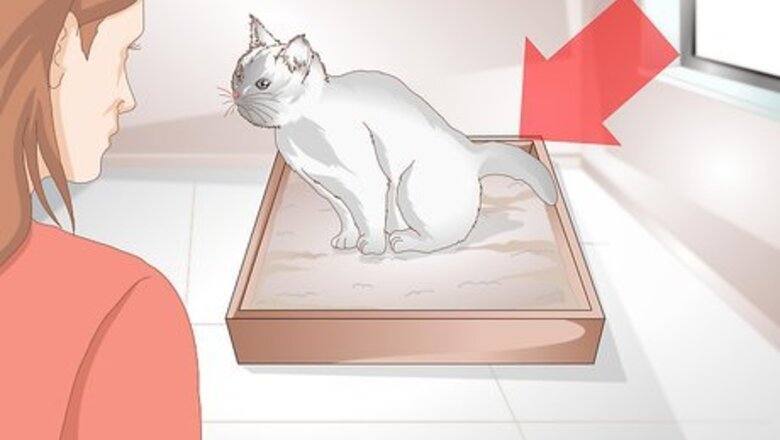
views
Keeping An Eye On The Litter Box
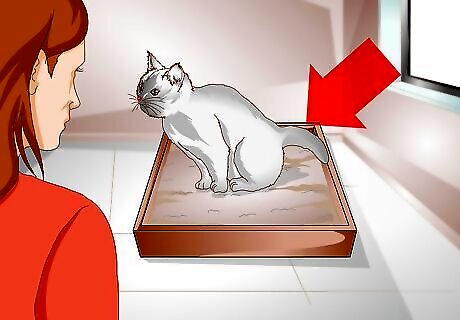
Make sure your cat is using the litter box. Sometimes when a cat is constipated and feels uncomfortable trying to relieve themselves in the litter box, they can associate the pain with the box itself, and start to avoid it entirely. If this happens, you may find hard balls of fecal matter in other places in your home, such as the bathtub, hallway, or a closet. Make the litter box as appealing as possible for your cat by removing any covers if present.These litter box tips will allow you to monitor your cat's bathroom habits regularly and bring your attention to any issues before they become a bigger problem. Try keeping your litter box in an open area that is easily accessible for your cat. Don't hide the litter box in a cabinet or small closet. Be aware that an older cat or one with arthritis, may not be able to access the litter box as they once could.
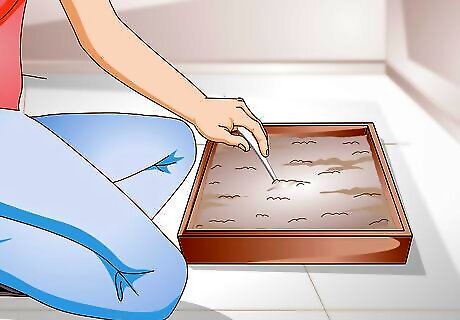
Look for straining in the litter box. Without the presence of fecal matter, is usually the first sign that your cat may be constipated. They can sometimes cry out or appear to be straining by standing on their toes and hunching excessively to try and relieve themselves. If you notice any of these awkward behaviors in the litter box, there could be a problem. It is normal for a cat to have, at least, one normal bowel movement per day, but many will regularly have two or more. For older cats with arthritis, products such as joint supplements, and sometimes pain medication, can help keep your cat comfortable when posturing in the litter box. Your cat may go in and out of the litter box frequently but not have any productive bowel movements. Some cats may vomit when they are constipated, too. When the cat's colon is extended and enlarged, there's a reflex called the gastric colon reflex that can make them vomit and defecate at the same time. Chances are, your cat won't produce much stool during these episodes. EXPERT TIP Pippa Elliott, MRCVS Pippa Elliott, MRCVS Veterinarian Dr. Elliott, BVMS, MRCVS is a veterinarian with over 30 years of experience in veterinary surgery and companion animal practice. She graduated from the University of Glasgow in 1987 with a degree in veterinary medicine and surgery. She has worked at the same animal clinic in her hometown for over 20 years. Pippa Elliott, MRCVS Pippa Elliott, MRCVS Veterinarian Don't assume that because a cat is straining in the tray, they are constipated. Other problems such as diarrhea or urinary blockages can look much the same. Be sure to inspect the tray and make a note of if a urinary puddle is present and if there are any soft stools. This will help your veterinarian decide on the best course of treatment.
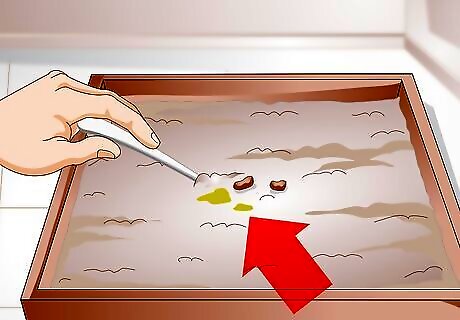
Look for indicators of urinary tract infections. If there are little to no urine spots present, especially when there is fecal matter present, your cat's discomfort or straining could indicate a urinary tract blockage. This is an emergency situation, which requires immediate veterinary assistance. Straining behavior is easily and frequently confused with what can be a more serious condition, a blocked urinary tract. One thing to be aware of if you see this type of litter box behavior, is to always check and make sure that urine is present in the box when your cat is finished using it. Urinary tract blockages are much more common in male cats, but can occur in females as well. If there is any doubt as to what is causing this behavior, consult with your veterinarian immediately. Be vigilant with litter box monitoring to avoid mistaking a urinary problem for constipation.
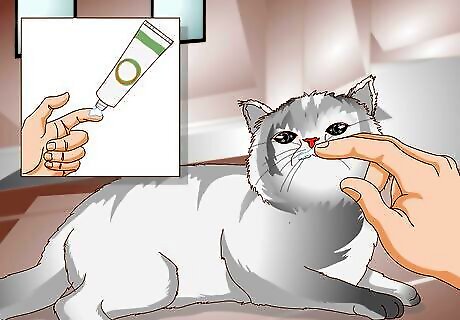
Consider using lubricating aids. There are a couple of lubricating aids that you can give your cat at home to help pass fecal matter if needed. Consult with your veterinarian about the products they have and for recommendations for their use. They usually carry lubricating products, such as Laxatone, that are designed to relieve constipation and are flavored so that your cat will enjoy consuming them. These products tend to be easier to administer because they are more appealing to your cat. These aids can also be applied to either, the roof of your cat's mouth, under their nose on their upper lip, or on a front paw. If you are unable to get the aid directly into your cat's mouth, they are usually prone to lick under their nose or their paws when there is a foreign substance present. Be patient and give your cat breaks if they are getting anxious or frustrated If using Laxatone, give your cat 3 cc (about 3 inches), 1-2 times daily. Petroleum jelly (Vaseline) can also be used safely at home. Try giving your cat 1/2 teaspoon, once daily, as a treat or mixed into wet food.
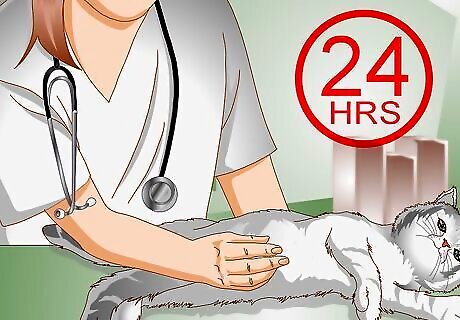
Decide if improper defecation is a persistent problem. If your cat has not been able to defecate normally for 24 hours after trying a few things at home, it is time to consult with your veterinarian. For mild cases of constipation, your veterinarian may recommend a laxative or stool softener. For more serious cases, an enema or manual removal of the feces under anesthesia may be necessary. However, Only in the most severe cases of constipation is surgery required. This may be recommended if your cat has been constipated for a long period of time and has developed obstipation. Obstipation is the inability for your cat to empty their colon on their own which results in a large amount of feces build-up. When this happens, your cat's colon can swell and lose its natural motility. In this case, surgery may be considered to be a lifesaving option for your cat.
Noticing Changes In Appetite
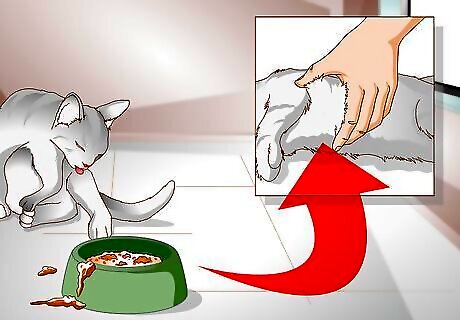
Check to see if your cat is eating as it normally does. However, don’t rely solely on changes in appetite to indicate that your cat may have a constipation issue. A change in appetite can also be an indicator for a long list of other issues. If you notice changes in diet, try checking your cat's tummy by applying gentle pressure to the abdomen while they are standing upright. Run your hand back and forth over their tummy to see if you can feel any hard lumps. If you do feel hard fecal lumps, take your cat to the veterinarian for a professional physical exam to confirm your concerns.
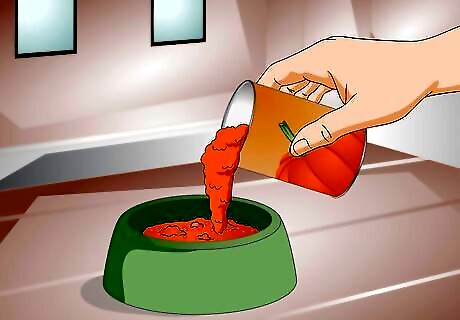
Prevent constipation through diet. Some cats that have a history of chronic constipation benefit from long term diet changes or by adding a high fiber supplement recommended by your veterinarian. Canned pumpkin is safe for your cat to eat and is high in fiber and moisture content. If your cat solely prefers a dry diet, find a brand of dry food with a high fiber content or add a little Metamucil cookie or powder to their food if they are willing to eat it.
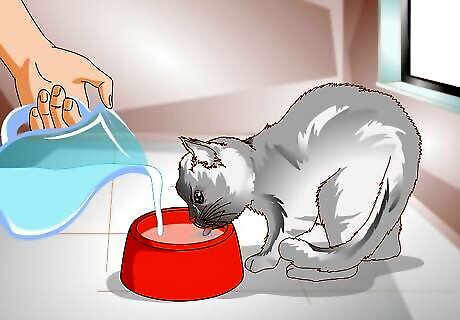
Increase your cat's water intake. Dehydration is a common culprit in many cases of constipation. Cats naturally derive the majority of their fluid requirements from their diet. Feeding a canned diet will supply a much greater water content than a dry one, and help to maintain proper hydration. You also provide your kitty with several water bowls strategically located around your home to encourage more drinking. Make sure the water in each bowl is clean, fresh, and appealing to your cat. A drinking fountain is another good way to encourage your cat to drink sufficiently. These types of fountains can be found at your local pet store.




















Comments
0 comment